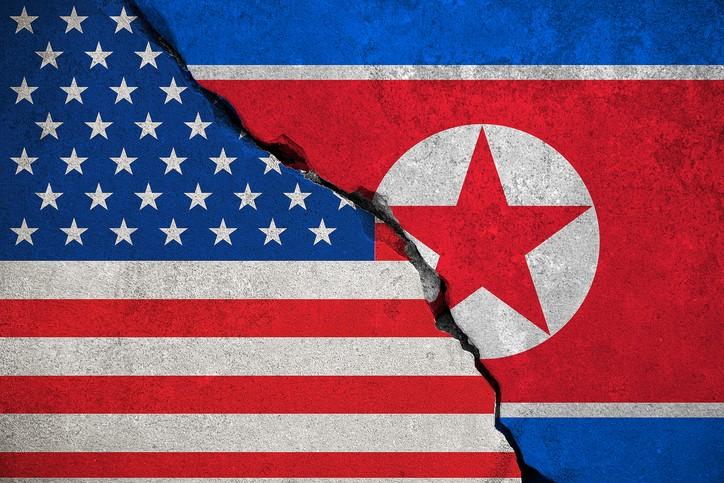Chaos in the Pacific: What is going on with North Korea?

north korea flag on broken brick wall and half usa united states of america flag, crisis trump president and north korean for nuclear atomic bomb risk war concept
September 18, 2017
North Korea, formally the Democratic People’s Republic of Korea, is currently under major international scrutiny due to their open and flagrant threats against western countries. They have launched a missile over Japan and conducted numerous nuclear bomb tests despite the will of the United Nations. The totalitarian state has always been a needle in the United States foot, but why does it seem like this has always been the case? To find the answers we have to go back to the end of World War Two in 1945.
When the United States forced Japan to surrender in the Pacific, the Soviet Union and the United States agreed that control over the formerly occupied Korean peninsula would be divided by the globe’s 38th parallel. This arrangement was only meant to last until the Korean people could reorganize their government and create a unified body to rule over the territory. Unfortunately, before this could happen, in 1947, the Cold War began. Russia and the United States refused to remove troops from their respective regions and reunification of the peninsula was halted. Liberal Democracy faced off against the Communists for the first time on a physical front.
In 1950, the standoff escalated when North Korean tanks (supplied by the Soviet Union and China) rolled across the 38th parallel in an attempt to forcibly reunify Korea. The United Nations Security Council almost immediately voted to intervene on behalf of South Korea. A common misconception is that the United States fought the war against North Korea. The United States was never officially at war with North Korea, it only supplied troops to the United Nations. Over fifteen other nations engaged in combat supporting South Korea including the United Kingdom and Thailand. It is true however that the United States supplied the majority of the United Nations troops and U.S. Army General Douglas MacArthur was appointed U.N. Commander of the forces in that area.
Over the course of the war, the capital of South Korea exchanged hands four times. Each side was nearly pushed out of the peninsula at some point during the war. Finally, in 1953 an armistice was called between North and South Korea with both sides controlling nearly the same territory they had before the war. A demilitarized zone was created across the peninsula to maintain the ceasefire. North Korea –still supported by China –and South Korea –supported by the United States and most other western cultures –are still technically not at peace, and the border between the two countries remains one of the most dangerous places in the world.
So, why is North Korea intent on threatening the United States and its allies? The answer is the same as it was in 1950. As long as the Korean peninsula remains divided and South Korea receives foreign aid, North Korea will remain hostile. The only possible outcome that will placate the region and stabilize the situation is total reunification under either government. Unfortunately, the situation is a mirror of conflict in the Middle East, specifically Syria. Russia and the United States will also continue to support their respective sides because Korea is their proxy-war in the Pacific.
For the past few decades, the totalitarian regime has threatened the United States with utter annihilation without any real power to back up their threats. However, that has changed recently. North Korea has been conducted nuclear bomb and ballistic missile tests in the past year. It is for this reason that President Trump and his staff in the White House have taken the hardened stance that any offense by North Korea on any United States territory or ally would result in severe consequences. While diplomacy has not been totally ruled out, it seems as if nothing will deter the Kim Jong Un regime from pursuing nuclear intercontinental ballistic missiles and continue to threaten American cities.
North Korea is not Trump’s “fault”, no more than it was President Clinton’s, President Bush’s or President Obama’s fault. If any blame were to be had, it would lay at the feet of general Douglas MacArthur for failing (or preventing, depending on your point of view) to reunify the Korean peninsula when he had the chance. Until the backers on both sides agree on the need for change, North Korea will continue to be a hostile and volatile nation.











